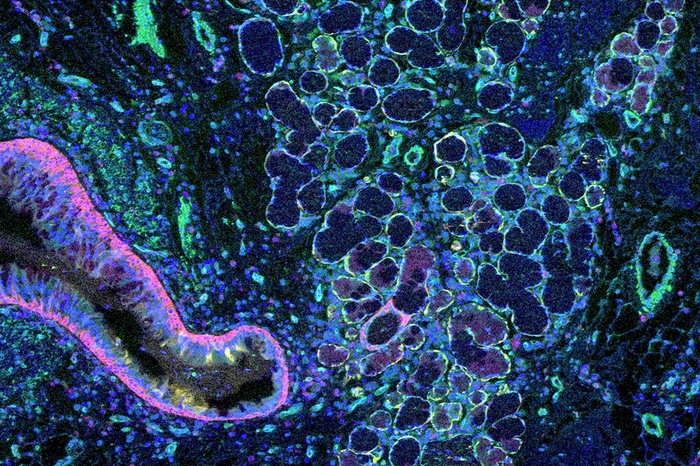Combining single-cell data with maps of tissue structure can be slow and tedious. In addition, machine learning algorithms may be limited by the data used to train them. To overcome these challenges, Weill Cornell Medicine researchers have developed a computational method to map the architecture of human tissues. The researchers say their approach promises to accelerate studies on organ-scale cellular interactions and could enable powerful new diagnostic strategies for a wide range of diseases.
Their findings are published in Nature Methods, in a paper titled, “Unsupervised discovery of tissue architecture in multiplexed imaging.”
“Multiplexed imaging and spatial transcriptomics enable highly resolved spatial characterization of cellular phenotypes, but still largely depend on laborious manual annotation to understand higher-order patterns of tissue organization,” wrote the researchers. “As a result, higher-order patterns of tissue organization are poorly understood and not systematically connected to disease pathology or clinical outcomes. To address this gap, we developed an approach called UTAG to identify and quantify microanatomical tissue structures in multiplexed images without human intervention.”
“Looking at tissues under the microscope, you see a bunch of cells that are grouped together spatially—you see that organization in images almost immediately,” said lead author Junbum Kim, a graduate student in physiology and biophysics at Weill Cornell Medicine. “Now, cell biologists have gained the ability to examine individual cells in tremendous detail, down to which genes each cell is expressing, so they’re focused on the cells instead of focusing on the tissue structure,” he said.
The researchers used the new method to generate detailed maps of several types of tissues, identifying and quantifying new aspects of microanatomy—the patterns that emerge at small scale when cells interact and that determine the ultimate function of tissue. Collaborating with a colleague at the University of North Carolina at Chapel Hill who studies lung disease, they also demonstrated that their technique could draw fine shades of distinction between different disease states in a tissue.
“Robust assessment of tissue microanatomy could enable the definition of tissue integrity ranges in human tissue across ages, detection of early precancer lesions and cancer invasion, and the study of age-associated diseases characterized by cellular degeneration, fibrosis, and loss of tissue integrity,” noted the researchers.
While cancer and other chronic diseases often cause major changes in tissue structure, detailed microanatomy may aid in diagnosing and treating more acute conditions. The researchers are applying their new technique to a wide range of tissues to understand how changes in tissue organization underlie its function in healthy state and dysfunction in disease.



